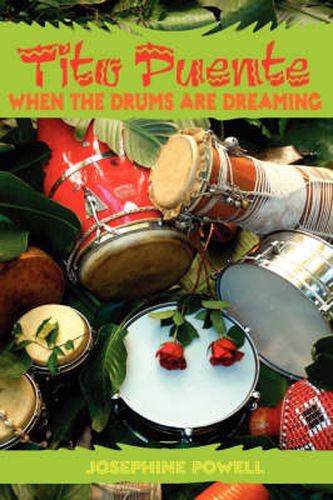Readings Newsletter
Become a Readings Member to make your shopping experience even easier.
Sign in or sign up for free!
You’re not far away from qualifying for FREE standard shipping within Australia
You’ve qualified for FREE standard shipping within Australia
The cart is loading…






This title is printed to order. This book may have been self-published. If so, we cannot guarantee the quality of the content. In the main most books will have gone through the editing process however some may not. We therefore suggest that you be aware of this before ordering this book. If in doubt check either the author or publisher’s details as we are unable to accept any returns unless they are faulty. Please contact us if you have any questions.
Ernesto “Tito” Puente born in 1923 in Spanish Harlem is a tale about an impoverished Puerto Rican boy who grew up with the advent of radio and American swing bands. At age ten he aspired to be a dancer: another Fred Astaire. An ankle injury gave him the opportunity to explore his talent as a musician. At fourteen he won the coveted Benny Goodman, Gene Krupa drum contest. Tito became a master percussionist. His instrument was the timbales, a pair of cylindrical drums beat upon with sticks. When he joined the dynamic Machito Orchestra at seventeen he saw a spiraling future until the Japanese attack on Pearl Harbor December 7, 1941 took him off to war. With the smell of kamikaze deaths, battle smoke, and torpedoes flying he sounded taps for the dead in the morning while he led a makeshift orchestra delivering lovable American wartime tunes in the afternoon. He returned home wounded, weary and jobless. Puente’s tale should have been the story of every returning American GI, who went off to war, came home to his sweetheart, attended school on the GI Bill, raised a family and settled down in a white cottage. Things were not that way. After the war his obsession for Cuban music drove him to Havana. He attended secret meetings of Santeria, an Afro-Cuban religious cult with its roots steeped in mysticism often times referred to as black magic. With the lure of the sacred bata drum he discovered a world of rhythms never heard by a white mans ear. He found himself inside the beat, and thoroughly possessed. Soon Tito became a devotee of Santeria and used those drum patterns and calls, which were the mainstay and backbone of his music. Today this hot hypnotic music is known worldwide as salsa.
$9.00 standard shipping within Australia
FREE standard shipping within Australia for orders over $100.00
Express & International shipping calculated at checkout
This title is printed to order. This book may have been self-published. If so, we cannot guarantee the quality of the content. In the main most books will have gone through the editing process however some may not. We therefore suggest that you be aware of this before ordering this book. If in doubt check either the author or publisher’s details as we are unable to accept any returns unless they are faulty. Please contact us if you have any questions.
Ernesto “Tito” Puente born in 1923 in Spanish Harlem is a tale about an impoverished Puerto Rican boy who grew up with the advent of radio and American swing bands. At age ten he aspired to be a dancer: another Fred Astaire. An ankle injury gave him the opportunity to explore his talent as a musician. At fourteen he won the coveted Benny Goodman, Gene Krupa drum contest. Tito became a master percussionist. His instrument was the timbales, a pair of cylindrical drums beat upon with sticks. When he joined the dynamic Machito Orchestra at seventeen he saw a spiraling future until the Japanese attack on Pearl Harbor December 7, 1941 took him off to war. With the smell of kamikaze deaths, battle smoke, and torpedoes flying he sounded taps for the dead in the morning while he led a makeshift orchestra delivering lovable American wartime tunes in the afternoon. He returned home wounded, weary and jobless. Puente’s tale should have been the story of every returning American GI, who went off to war, came home to his sweetheart, attended school on the GI Bill, raised a family and settled down in a white cottage. Things were not that way. After the war his obsession for Cuban music drove him to Havana. He attended secret meetings of Santeria, an Afro-Cuban religious cult with its roots steeped in mysticism often times referred to as black magic. With the lure of the sacred bata drum he discovered a world of rhythms never heard by a white mans ear. He found himself inside the beat, and thoroughly possessed. Soon Tito became a devotee of Santeria and used those drum patterns and calls, which were the mainstay and backbone of his music. Today this hot hypnotic music is known worldwide as salsa.